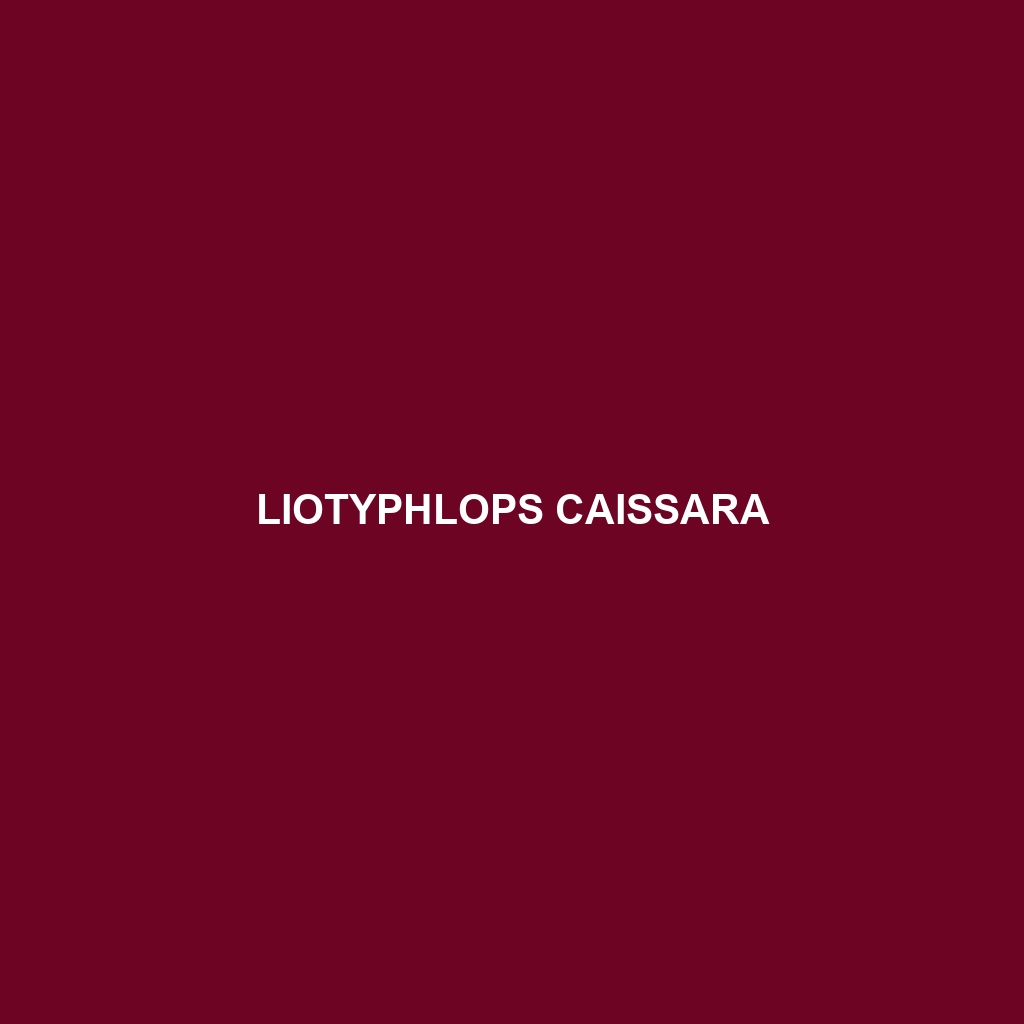Common Name
Liotyphlops caissara
Scientific Name
Liotyphlops caissara
Habitat
Liotyphlops caissara, also known as the Caissara blind snake, is primarily found in the lush ecosystems of southeastern Brazil. This species particularly thrives in rainforests and savannas, favoring areas with loose soil that facilitates burrowing. The climate in these regions is typically tropical, with significant rainfall that supports a diverse array of flora and fauna. It can be observed in various environmental conditions, from humid lowland forests to slightly drier ecosystems, demonstrating its adaptability to both forested and open habitats.
Physical Characteristics
Liotyphlops caissara exhibits a unique appearance that sets it apart from other snake species. Typically, these blind snakes range from 30 to 45 centimeters in length. Their slender, elongated bodies are covered with smooth scales that exhibit a pale coloration—often beige or light brown—which helps them blend into their environments. One distinctive feature is their vestigial eyes, which are covered by scales and hence do not aid in vision but may serve some light sensitivity. This adaptation aligns with their burrowing lifestyle, reducing predation risk while foraging underground.
Behavior
Behaviorally, Liotyphlops caissara is primarily a nocturnal species, emerging during the cooler hours to hunt for food and mate. They are secretive creatures, spending the majority of their lives underground, utilizing their sharp snouts to burrow through the soil efficiently. Social interactions are limited, as they are solitary creatures outside of mating periods. Their mating rituals include a unique form of pheromone signaling, which attracts potential mates during the breeding season. Observations indicate they show little aggression towards one another, focusing instead on their solitary pursuits.
Diet
The diet of Liotyphlops caissara primarily consists of small invertebrates, which makes them an insectivore. They feed on a variety of organisms, including ants and termites, which they easily locate due to their burrowing habits. Their elongated tongues help them capture prey by sensing vibrations in the soil. This dietary preference plays an essential role in controlling insect populations within their habitat, demonstrating their importance in maintaining ecological balance.
Reproduction
The reproductive cycle of Liotyphlops caissara typically aligns with seasonal climate changes, mainly occurring during the wet season when food availability is high. The mating season can last several months, during which females may produce a clutch of 6 to 12 eggs. After laying the eggs, the female demonstrates minimal parental care, leaving the eggs to develop independently. The gestation period for these eggs is roughly 60 to 80 days, after which hatchlings emerge, small but fully functional, adapted to survive in their already established ecological niches.
Conservation Status
As of the current assessment, Liotyphlops caissara has been categorized as vulnerable. The primary threats to its survival include habitat loss due to deforestation, agriculture, and urban expansion. Conservation efforts are crucial to protect these habitats and ensure the species can thrive. Organizations are working to promote sustainable land-use practices within southeastern Brazil to combat these threats and preserve the delicate ecological balance.
Interesting Facts
One fascinating aspect of Liotyphlops caissara is its adaptation to a subterranean lifestyle. Unlike many snake species that rely heavily on vision, this snake’s evolutionary modifications include reduced eyes covered by protective scales, which are ideal for life underground. Additionally, its secretive nature often means that very little is known about its detailed behaviors in the wild, making it a subject of interest for herpetologists and researchers.
Role in Ecosystem
Liotyphlops caissara plays a significant ecological role within its native habitat. As an insectivore, it serves as a natural pest controller, helping maintain the balance of insect populations within its ecosystem. By preying on ants and termites, the Caissara blind snake contributes to the health of the soil and the overall biodiversity of its environment. Furthermore, being part of the food web, it serves as prey for larger predators, thus playing a critical role in the ecosystem’s energy transfer and nutrient cycling.
